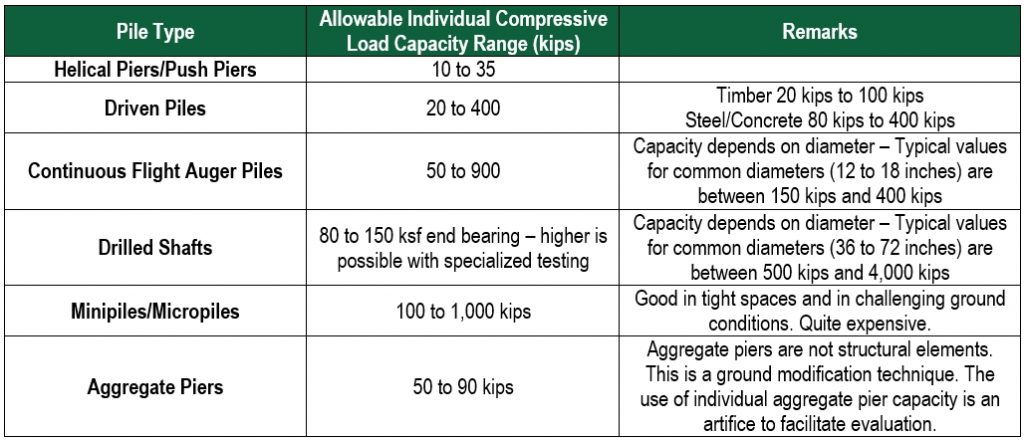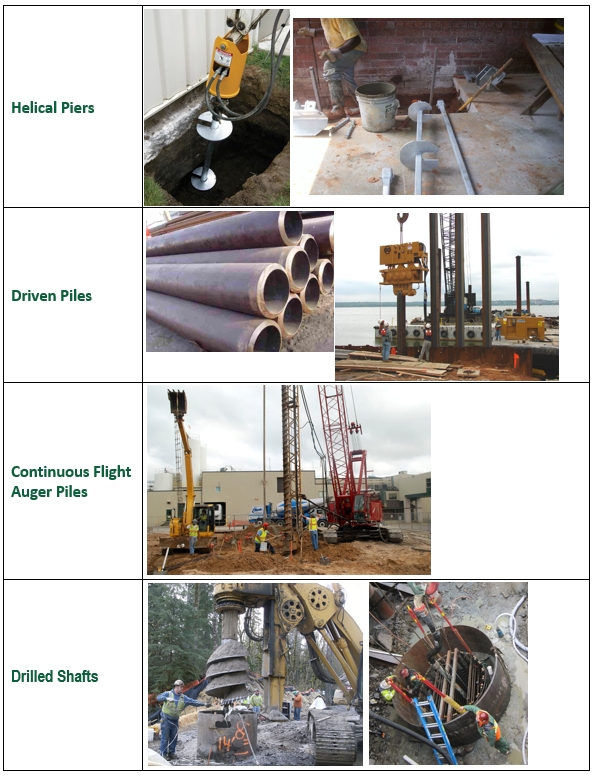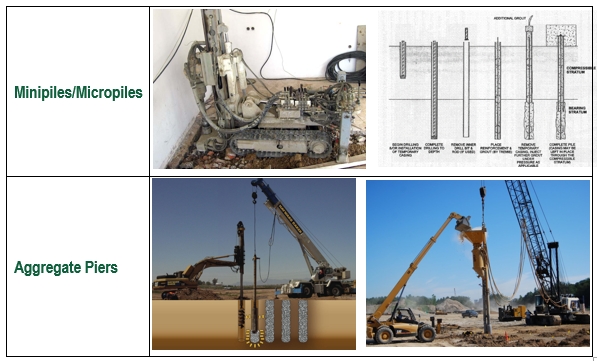Rule of Thumb for Deep Foundations
What is a Rule of Thumb? From Dictionary.com: “a general or approximate principle, procedure, or rule based on experience or practice, as opposed to a specific, scientific calculation or estimate.” The one explanation from English Common Law which states that “a man is allowed to beat his wife with a stick no thicker than his thumb” is, as far as we know, somewhat of a hoax, and doesn’t apply here anyway.
What are Deep Foundations? A couple of definitions from the interwebs:
Wikipedia says: “A deep foundation is a type of foundation which transfers building loads to the earth farther down from the surface than a shallow foundation does, to a subsurface layer or a range of depths.” ABChance.com says: “A deep foundation is a foundation that is installed to significant depth so as to handle a specific load. Defined by its depth to length ratio, the depth will usually have to go beyond 10 feet deep in order for the foundation to truly be a deep foundation.”
In short and distilled, deep foundations are structural elements which transfer structural foundation loads to a deeper, more competent soil layer or to bedrock.
But why use deep foundations? It’s all about controlling and keeping foundation settlement within tolerable limits across the structure. Otherwise, if the structure experiences excessive foundation settlement, the result will typically be damage to the structure and building finishes, and a law suit. Now that we understand what the basic objective is (settlement control), the decision to use deep foundations will typically involve one or more of these factors:
- Heavy Foundation Loads - Parking decks, high rise buildings, water tanks, etc.
- Strict Settlement Tolerance - Precision machining or manufacturing equipment, sensitive building finishes, etc.
- Weak/Compressible Soils - natural or man-made
- Poor Quality Fill (Organics, Debris-Laden)
- Existing Adjacent Structures - Avoid inducing settlement on existing structures
- Repair of Existing Structures – Underpinning, enhance foundation capacity
What are the most common deep foundation types? There are many types of deep foundations. For the sake of brevity, we will concentrate on the most popular or common types of deep foundations and their typical allowable compressive load capacity range. These are common values for the Piedmont Geologic Region in the Southeastern US. Capacities can be higher, but these are common, typical values to guide initial decisions. Remember the Rule of Thumb theme.



